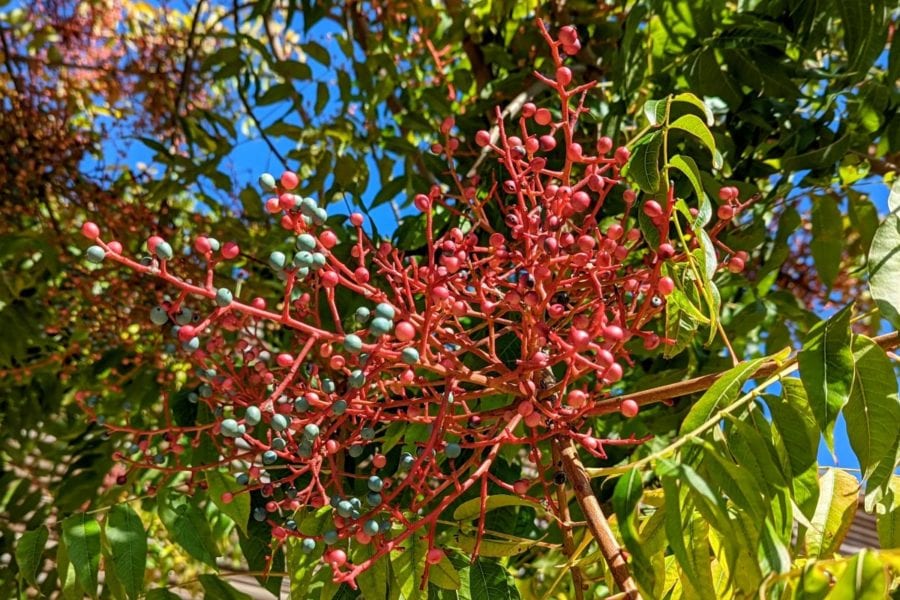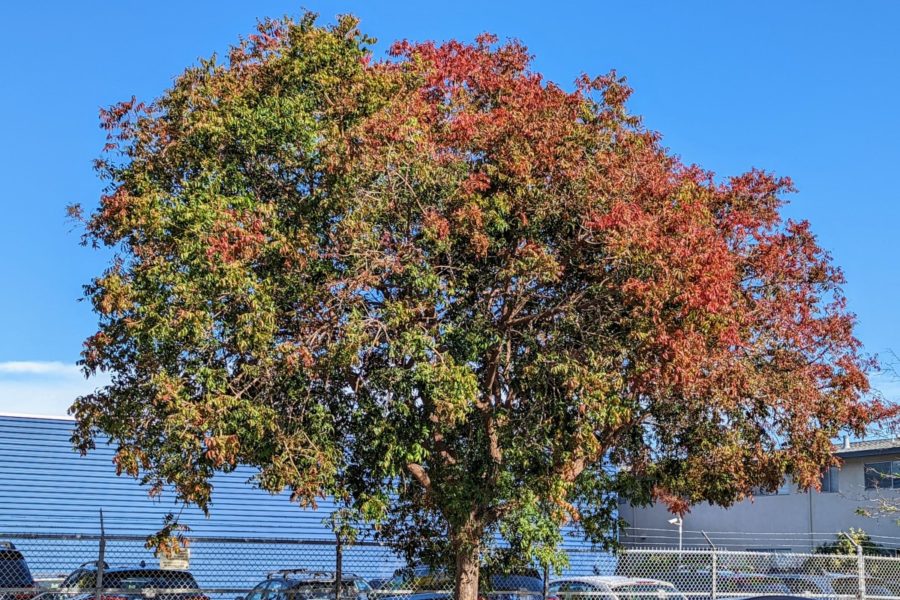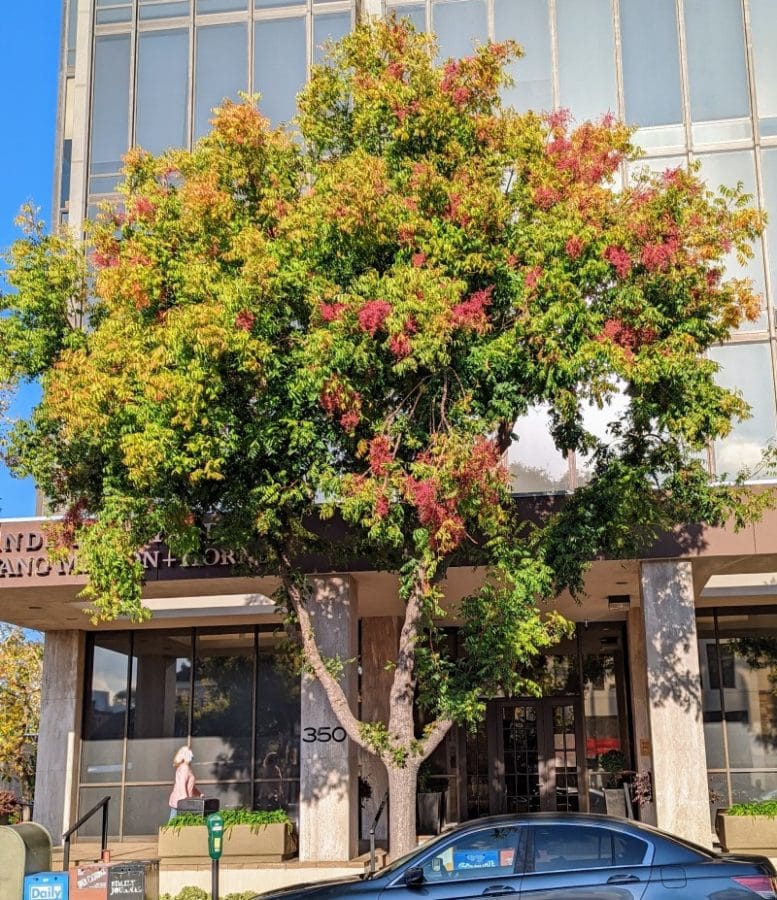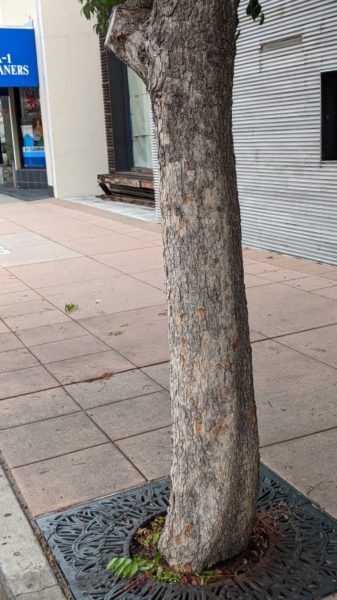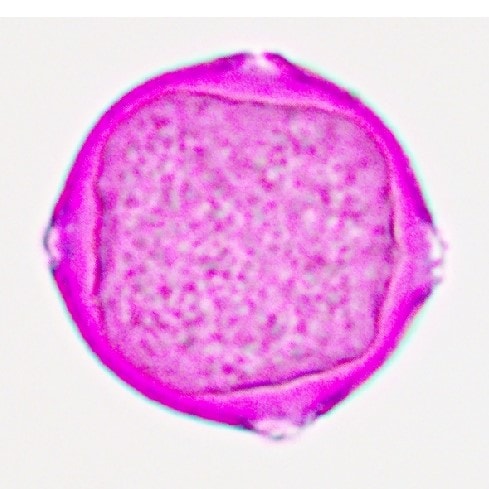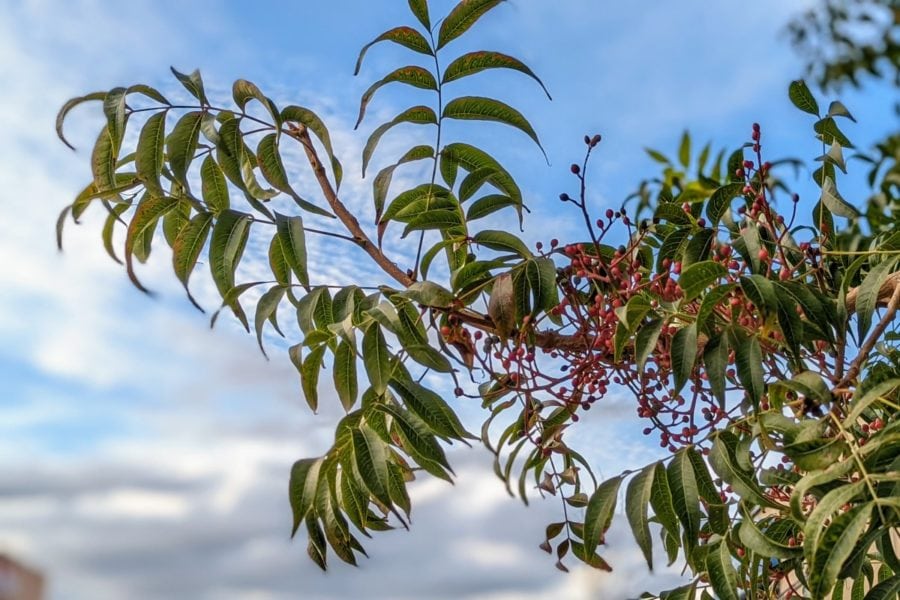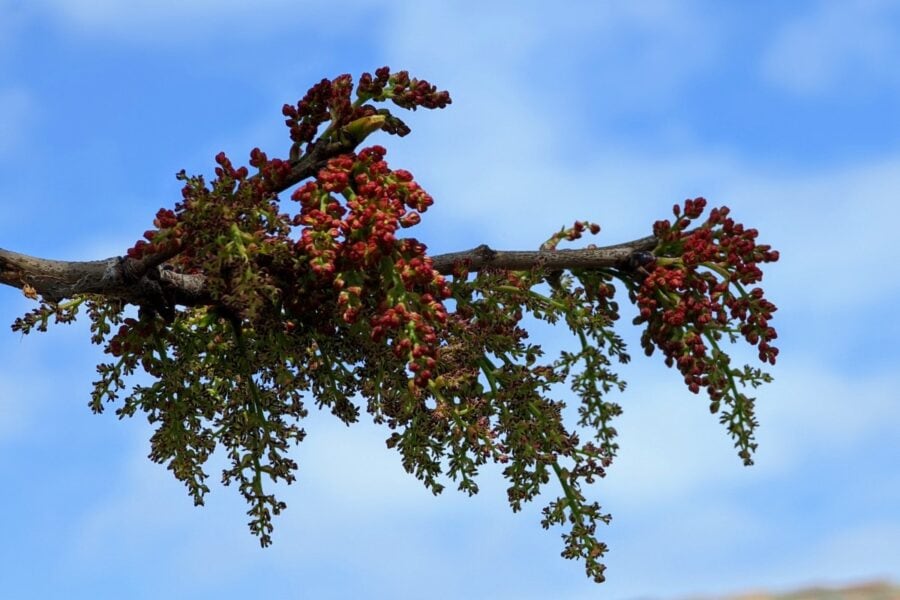In this article, with the help of photos, we will learn to identify Chinese pistache trees (scientific name: Pistacia chinensis) as well as how and when their pollen spreads.
| Chinese pistache (Pistacia chinensis) | Pollen allergy profile |
|---|---|
| Pollen season | Spring |
| Pollination type | Wind pollinated. When in bloom, the male flowers release pollen in the air. |
| Cross-reactivity to other pollen | Not known. |
| Gender | Dioecious: Male and female flowers grow on separate trees. |
| Leaves | Compound leaves with 8 to 16 leaflets that grow in pairs opposite each other (see pictures below) |
| Fruit | Female trees bear berry-like fruit (drupes) that turn red by fall |
How to identify a Chinese pistache tree (Pistacia chinensis)?
The Chinese pistache has separate male and female trees and both are extremely pleasing to the eyes, especially in autumn when their foliage turns red before the leaves fall off. As the name suggests, the trees were introduced from China and they grow in California, Texas, Georgia, Alabama, and North Carolina[1].
Chinese pistache, Botanical name: Pistacia chinensis, has compound leaves made up of 8 to 16 green lanceolate leaflets that fold in towards each other as they mature from spring to summer. The leaves turn red during autumn and the female tree bears red small berries like fruit.
Leaves and fruit
Tree size and shape
The trees grow from 10 to 20 feet tall, but it is possible for them to be 40 feet tall [2].
The trees have lush green canopies during spring, which start to turn red in autumn before the leaves fall off in the winter.
Here are pictures of a male and a female tree taken in early November in Burlingame, CA. You can see the foliage is transitioning from green to red on both trees.
Bark and trunk
The trees generally have a single trunk rising from the ground. The trees have grey-brown bark with ridges. In some spots, you may see reddish-brown furrows.
The trunk is about 6 to 15 inches in diameter at eye level.
During which months Chinese pistache releases pollen?
Chinese Pistache releases pollen during mid to late spring. In the San Francisco bay area, the pollen is found in our air surveys from Apr-10th to May-10th.
Depending on the temperature and rainfall of the preceding winter, the actual pollination period could shift by one to two weeks each year. If you have allergies to the tree, you can be better informed by learning to identify its trees and their flowering season in the sections below.
However, if you live in the San Francisco Bay Area, you have an easier way out! I do regular tree inspections and air sampling in the area to provide reliable pollen updates on our website
How does Chinese pistache pollen spread?
Chinese pistache tree releases its pollen into the air and wind can carry its pollen for several miles. The pollen is wind-transported and can easily travel into the neighborhood residences and buildings.
What does Chinese pistache pollen looks like?
The pollen is around 35 micrometers (0.035 mm) in size and has three to four pores on its outer shell (exine). Pistacia chinensis pollen: Triporate or Tetraporate.
To see the pollen of other plants and trees, visit our pollen library.
How to know if a Chinese pistache is releasing pollen?
Chinese pistache has separate male and female trees.
Female trees do not produce pollen, so, if you see a tree with berries-like fruit (drupes), it is a female tree and you can be sure that it does not ever release pollen (see photo below).
A male tree, however, bears flowers in spring that appear before the new leaves. The flowers are produced in panicles, which are groupings of tiny flowers arranged on several branches (see picture below).
The male flowers take a few weeks to mature and start releasing pollen when the leaves appear on the tree during mid to late spring.
Eventually, the panicles become a net-like structure, which hangs loosely on the tree branches and decays. This stage is the beginning of the end of pollination. Meaning, in a couple of weeks after this stage, the tree will not release pollen into the air.
However, if you get hold of the decaying flower and disturb it, you may still get exposed to some of the residual pollen.
During summer, autumn, and winter, all Chinese pistache trees are safe for any pollen allergy sufferer.
You can learn a lot more about pollen allergies and how to avoid them in my pollen allergy guide.
Chinese pistache allergy summary
Chinese pistache (Genus: Pistacia) trees release pollen in the air during spring. They are not commonly tested for allergies by clinicians, so, their role in spring hay fever is not fully understood. But, their capacity to release pollen is comparable to other allergenic trees such as walnuts and oaks.
If you have a tree in your neighborhood or near your workplace and you get allergic symptoms during mid-spring, Chinese pistache could be one of the culprits. Speak with your doctor to get tested for allergies to its pollen.
The other trees that release pollen during spring are Birch, oaks, walnut, and mulberry.
Sources
References
- Allergy Plants by Mary Jelks, M.D.
- Plant identification terminology by James G. Harris and Melinda Woolf Harris (Second Edition)
- Sampling and indentifying pollens and Molds by E. Grant Smith
All pictures, unless otherwise credited to another source, are taken by the author and are copyrighted material. The pollen picture is taken in our aerobiology lab using an Olympus compound microscope.



